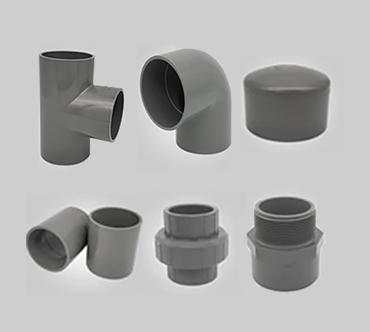
High-Density Polyethylene (HDPE) pipes are a modern solution to various piping needs, offering durability, flexibility, and longevity across numerous industries. These pipes are made from a thermoplastic polymer, and their widespread use spans applications in water supply systems, sewage management, agricultural irrigation, and even gas transportation. HDPE pipes are known for their impressive resistance to corrosion, chemicals, and physical wear, making them ideal for challenging environments. In this article, we’ll explore the benefits, applications, and lifespan of HDPE pipes.
What Are HDPE Pipes?
HDPE pipes are a type of plastic pipe made from high-density polyethylene, a material formed through the polymerization of ethylene monomers. Unlike traditional piping materials like steel or PVC, HDPE offers superior strength-to-density ratio, which means it is both lightweight and durable. HDPE is a non-toxic, corrosion-resistant material that is highly versatile, enabling it to meet various industrial, municipal, and residential needs.
The pipes are manufactured using extrusion processes, where polyethylene pellets are heated and forced through a mold to form long pipe sections. These pipes are typically available in various diameters, lengths, and pressure ratings, making them suitable for a wide range of applications.
Benefits of HDPE Pipes
-
Durability and Strength: One of the key advantages of HDPE pipes is their remarkable durability. HDPE is resistant to most chemicals, UV radiation, and environmental stress. It doesn’t rust or corrode like metal pipes, making it ideal for transporting water and other fluids in various conditions. HDPE pipes are also highly resistant to abrasion, ensuring that they maintain their integrity even in rough terrains.
-
Flexibility: Unlike rigid pipes such as PVC or steel, HDPE pipes are highly flexible, allowing them to bend and conform to different shapes without breaking. This flexibility makes them easier to install in areas where traditional pipes would be difficult or costly to work with. It also reduces the need for joints and fittings, minimizing the risk of leaks.
-
Cost-Effectiveness: HDPE pipes tend to be more cost-effective than traditional piping materials due to their lightweight nature and ease of installation. The reduced need for joint fittings and the ease of transportation and handling all contribute to lower installation costs. Additionally, HDPE pipes have a longer service life, which translates to lower maintenance and replacement costs over time.
-
Leak-Free Performance: HDPE pipes can be welded together using a heat fusion process, creating a continuous and seamless connection. This reduces the likelihood of leaks and increases the overall reliability of the piping system. The joint-free nature of the system is particularly important in water and sewage systems, where leaks can result in significant losses and contamination.
Applications of HDPE Pipes
HDPE pipes are widely used in various sectors due to their versatile properties. Some of the most common applications include:
-
Water Distribution Systems: HDPE pipes are often used in municipal water supply systems because of their corrosion resistance and long lifespan.
-
Sewer and Drainage Systems: Due to their resistance to chemicals and abrasive wear, HDPE pipes are ideal for underground drainage systems and sewage networks.
-
Gas Pipelines: MPP Pipe are commonly used to transport natural gas and other fuels due to their strength and ability to withstand pressure.
-
Agricultural Irrigation: HDPE’s flexibility and resistance to environmental conditions make it a popular choice for irrigation systems, helping to efficiently distribute water to crops.
-
Industrial Applications: Many industries rely on HDPE pipes to transport chemicals, slurry, or wastewater because of the material’s resistance to corrosion and chemical attack.
Lifespan of HDPE Pipes
One of the most attractive aspects of HDPE pipes is their long service life. On average, HDPE pipes can last between 50 to 100 years, depending on factors such as installation conditions, the type of fluid being transported, and environmental factors like soil acidity. When properly installed and maintained, HDPE pipes can serve for decades, making them a long-term investment.
Conclusion
HDPE pipes offer a durable, cost-effective, and flexible alternative to traditional piping materials. Their resistance to corrosion, ease of installation, and ability to perform well in various environments make them a preferred choice for water, sewage, gas, and agricultural systems. With an impressive lifespan of 50 to 100 years, HDPE pipes provide long-term value, making them an essential component in modern infrastructure projects.

